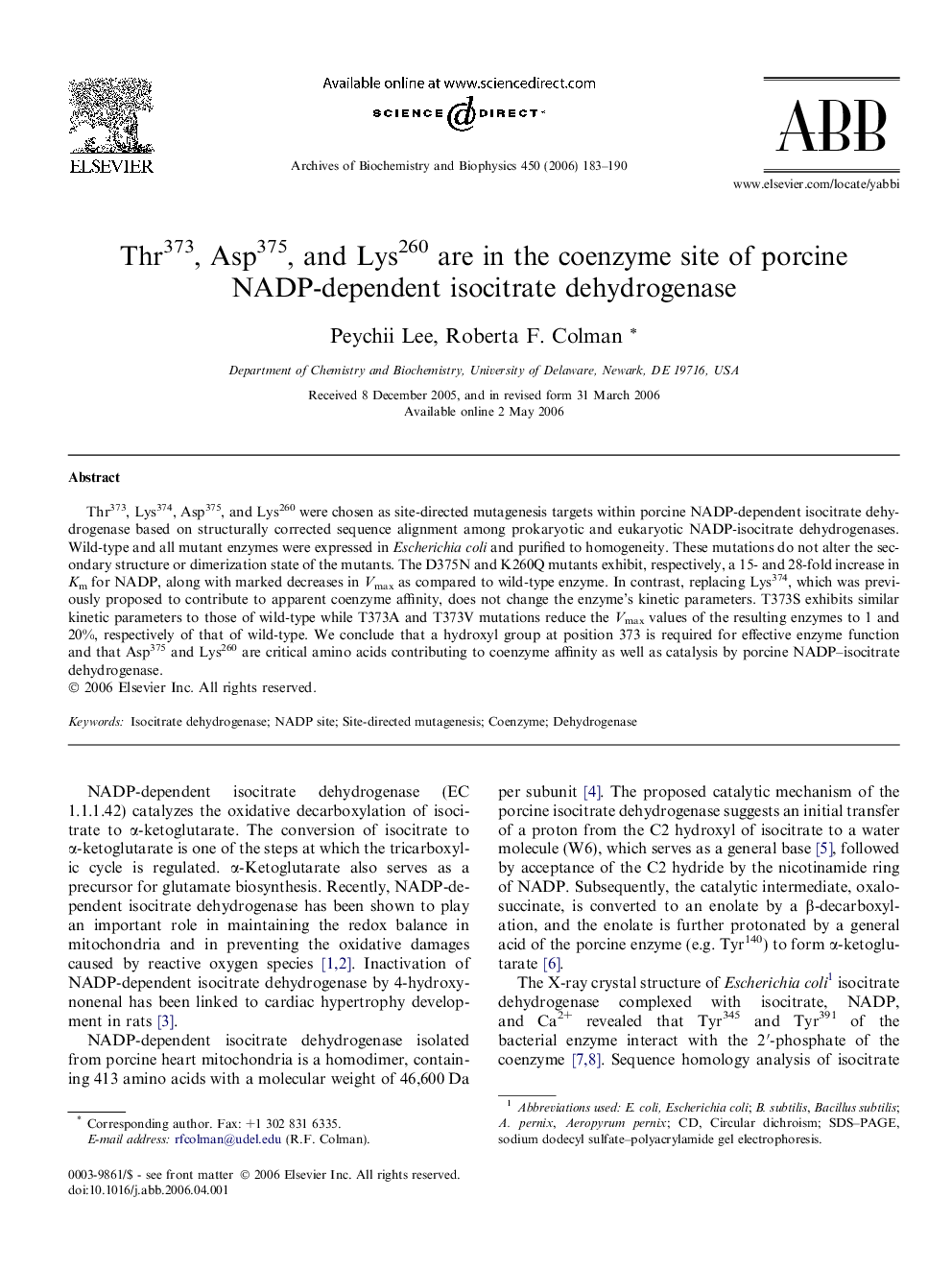| Article ID | Journal | Published Year | Pages | File Type |
|---|---|---|---|---|
| 1927507 | Archives of Biochemistry and Biophysics | 2006 | 8 Pages |
Thr373, Lys374, Asp375, and Lys260 were chosen as site-directed mutagenesis targets within porcine NADP-dependent isocitrate dehydrogenase based on structurally corrected sequence alignment among prokaryotic and eukaryotic NADP-isocitrate dehydrogenases. Wild-type and all mutant enzymes were expressed in Escherichia coli and purified to homogeneity. These mutations do not alter the secondary structure or dimerization state of the mutants. The D375N and K260Q mutants exhibit, respectively, a 15- and 28-fold increase in Km for NADP, along with marked decreases in Vmax as compared to wild-type enzyme. In contrast, replacing Lys374, which was previously proposed to contribute to apparent coenzyme affinity, does not change the enzyme’s kinetic parameters. T373S exhibits similar kinetic parameters to those of wild-type while T373A and T373V mutations reduce the Vmax values of the resulting enzymes to 1 and 20%, respectively of that of wild-type. We conclude that a hydroxyl group at position 373 is required for effective enzyme function and that Asp375 and Lys260 are critical amino acids contributing to coenzyme affinity as well as catalysis by porcine NADP–isocitrate dehydrogenase.
